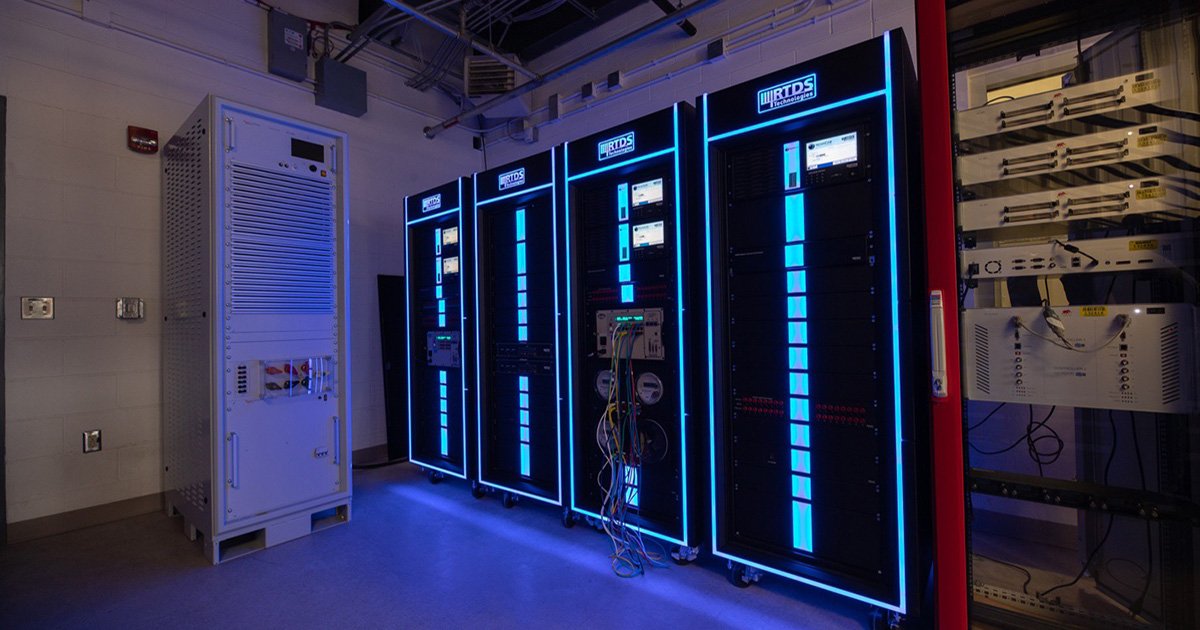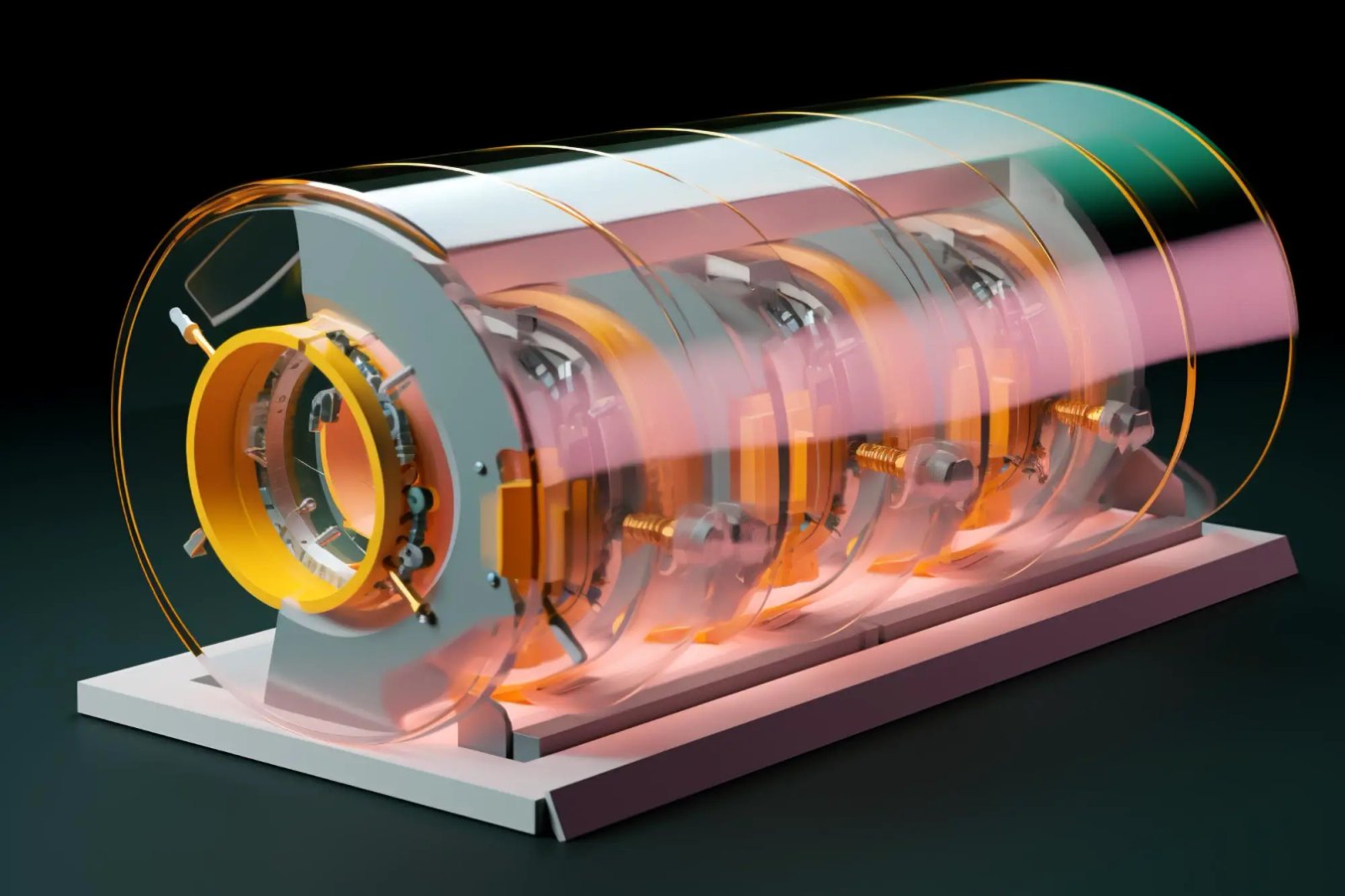Quantum Computer systems Can Now Interface With Energy Grid Tools
NREL and Atom Computing Debut Open-Supply Software for Quantum-in-the-Loop Research
Atom Computing’s quantum computing resolution stack has been interfaced with energy analysis tools on the Nationwide Renewable Power Laboratory. The interface is open supply and vendor impartial, permitting different researchers to pursue their very own quantum-supported research. Picture from Atom Computing
With its head-spinning dimension and connections, the ability system is so complicated that even supercomputers wrestle to effectively clear up sure optimization issues. However quantum computer systems may fare higher, and now researchers can discover that prospect due to a software program interface between quantum computer systems and grid tools.
The hyperlink from quantum to grid—achieved by a crew from the Nationwide Renewable Power Laboratory (NREL) with funding from the Division of Power Workplace of Power Effectivity and Renewable Power, and in collaboration with RTDS Applied sciences Inc., and Atom Computing—permits researchers to carry out “quantum-in-the-loop” experiments. And this functionality goes past simply power gadgets: With NREL’s Superior Analysis on Built-in Power Methods (ARIES), researchers can run quantum in-the-loop inside extremely reasonable energy techniques. Quantum in-the-loop might be an essential subsequent step for utilizing quantum computing to optimize electrical grid operations with the interconnection of more and more complicated distributed power assets.
The analysis crew efficiently debuted their open-source interface close to Boulder, Colorado, utilizing a stack of RTDS real-time grid simulators and Atom Computing’s resolution stack, which harnesses its atomic-array quantum computing know-how. Their demonstration marked a historic second for each quantum computing and energy techniques: For the primary time, a quantum computing know-how is built-in right into a dynamic electrical grid analysis platform, opening new horizons in grid and {hardware} validation.
“To evaluate the safety of next-generation communication protocols and validate present and future quantum algorithms, it’s essential to determine a real-world emulation atmosphere with precise {hardware} and high-speed communication. That is exactly what now we have developed at ARIES with quantum in-the-loop,” stated Rob Hovsapian, an ARIES analysis advisor.
What Can Quantum Provide the Grid?
The analysis crew’s quantum-in-the-loop framework is motivated by previous findings that quantum algorithms are properly suited to energy system complexity, particularly massive optimization issues that overwhelm classical computer systems. Such complicated issues are more and more widespread as distributed power assets proliferate and energy circulation turns into bidirectional.
“With the large quantity of how power can now be generated and provided, it is vitally essential to deal with so many inputs and outputs, however classical computing-based optimizers usually are not designed to deal with an exponential scale-up in enter parameters that the trade is predicted to witness within the subsequent 20 years,” stated Sayonsom Chanda, an influence system engineer at NREL. “We’re speaking tens of millions of inputs and outputs; that’s when classical computer systems begin exhibiting their limits, and quantum computer systems their advantages.”
When modeling the grid, each electrical automobile, house equipment, or sensor is a possible variable. Their information work together and coevolve in such convoluted ways in which even a question into the grid’s out there energy turns into computationally tough. The brand new interface simplifies the method of translating optimization issues into quantum variables and facilitates communication from quantum computer systems to energy system simulations. As curiosity in quantum computing amplifies, the interface will assist scientists classify the kinds of issues that may be solved by quantum computer systems and consider them in dwell experiments.
“Think about, for instance, {that a} metropolis has to evacuate due to an incoming hurricane,” Hovsapian stated. “Impulsively it’s a must to make choices round environment friendly evacuation, which depend upon the cost of electrical automobiles, their path out of town, the provision of charging stations, and many others. Quantum computing will be the key to this sort of multiobjective optimization, and now now we have the mandatory instruments to search out out.”
Quantum physics—distinguished by ideas of likelihood and entanglement—provides a functionally totally different, and in some circumstances sooner, type of computing. For instance, the quantum Grover’s algorithm can theoretically clear up search issues extra effectively than any recognized classical algorithm. With latest technical achievements by firms like Atom Computing, quantum algorithms are being examined on actual functions, and energy techniques rank among the many most fascinating areas.
“Take into account a number of the most difficult issues in power techniques immediately: Making choices primarily based on massive sensor networks; optimizing system restoration throughout fault situations; securing communications between community gadgets. There arecore functions that quantum computer systems could excel at, so we’re accelerating their adoption in energy techniques with this interface,” Hovsapian stated.
Check Setup and Know-how
NREL and different analysis services frequently validate new energy applied sciences with {hardware} in-the-loop, however quantum in-the-loop has by no means existed till now. The demonstration relied on a number of distinctive capabilities: NREL’s supplied 9 digital real-time simulators, which communicated over the ESnet community to Atom Computing’s quantum emulator and ultimately to Phoenix, its prototype system. Linking the 2 websites was the newly developed interface—a software program for deciphering, changing, and transmitting information from every finish in actual time.
Digital real-time simulators can simulate energy techniques for analysis and planning. NREL and Atom Computing constructed an utility programming interface between real-time simulators and quantum computer systems, permitting the simulations to speak with quantum solvers for complicated optimization issues. Picture by NREL
In an article written by the NREL crew titled “Structure for Quantum-in-the Loop Actual-Time Simulations for Designing Resilient Good Grids,” Chanda and Hovsapian rigorously clarify the interface’s design and supply an illustrative instance: electrical automobile charging coordination.
“Researchers can use the quantum laptop to develop and implement the quantum approximation optimization algorithm or the variational quantum eigensolver algorithms,” the article states. “These high-performance code snippets will assist researchers to bridge the computational gaps between classical and quantum computer systems, and can be largely primarily based on acquainted open-source frameworks corresponding to QISKIT, QMuTPy, and Queso.”
Moreover being tech-agnostic for quantum computing platforms, the interface is appropriate with all real-time digital simulation platforms. Customers can work together with the software program by means of internet browsers and a user-friendly interface to set desired optimization values, regulate quantum algorithms, and retrieve qubit measurements. The authors plan to publicly launch the code on GitHub.
What Is Subsequent?
Quantum computing continues to be very early-stage, and its worth for energy techniques stays unproven, however that’s exactly why this interface is so helpful: All of the theorizing and expectations round quantum computing can now be evaluated experimentally.
“It’s essential for utilities to discipline take a look at and undertake subsequent technology applied sciences, and quantum computing is not any exception,” Chanda stated. “This interface is an enabler for future analysis into rising grid issues.”
ARIES capabilities at NREL present reasonable energy system environments for superior analysis. The quantum-in-the-loop interface permits researchers to carry out experiments on ARIES property utilizing quantum computer systems. Picture by NREL
Quantum in-the-loop is very enabling with ARIES, the place it joins different applied sciences in-the-loop, like business renewable power assets, system controllers, supercomputer-powered emulations, sensors, and substation tools. ARIES is as near actual as attainable for energy system experiments, and it continues to increase: By subsequent yr, ARIES can have the capability to regulate 10,000 power gadgets, amongst different investments. This functionality provides distinctive and essential realism for evaluating quantum algorithms and propelling developments in energy techniques.
“The primary optimization drawback that we need to deal with is how greatest to attract energy from totally different sources,” Chanda stated. “You’ve got some assets extra carefully positioned to sure masses and others that make extra financial sense to deploy. Maybe quantum computing can decide tips on how to rapidly change energy sources for resilience and effectivity.”
We’re nonetheless on the daybreak of quantum computing, however the U.S. Division of Power and NREL have eliminated an essential barrier to bringing this hopeful know-how into the fold of power techniques.
Keep updated by subscribing to the Power Methods Integration e-newsletter.



